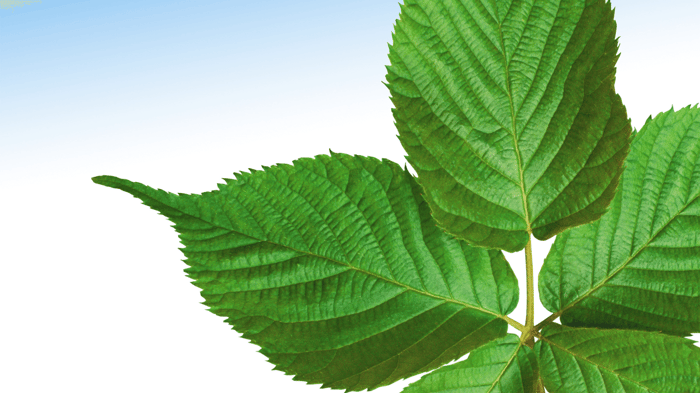Table of Contents
Slippery elm isn’t just another plant tucked into the long history of herbal medicine—it’s one of those remedies that has managed to carry its reputation across centuries, cultures, and even continents. Known scientifically as Ulmus rubra, this North American tree holds an inner bark that, when powdered and mixed with water, transforms into a soft, gel-like substance capable of soothing irritation, calming inflammation, and protecting the body’s most delicate tissues.
For Indigenous peoples, this wasn’t abstract knowledge. It was lived experience. Slippery elm could become food during lean times, medicine for burns or coughs, or even part of spiritual practices where protection and balance were needed.
The Origins and History of Slippery Elm
Indigenous Knowledge and Survival Medicine
The story of slippery elm begins with the Native American communities who first discovered and shared its uses. For them, the inner bark of Ulmus rubra was a kind of multi-tool for survival. Powdered and mixed with water, it created a soft porridge that could feed families when food was scarce. This wasn’t just a backup ration; it was nutrient-rich, easy to digest, and gentle on the body during times of illness or weakness.
But food was only one role. The same bark could be applied as poultices to burns, cuts, or insect bites. It wasn’t about sterilization or antibiotics in the way we think of medicine today, but about creating an environment where the body’s natural healing processes could unfold with less pain and less risk of further damage.
For coughs, sore throats, and digestive upset, the bark could be brewed into a thick, soothing drink. In all of these uses, the common thread was comfort: slippery elm was there to cushion, protect, and sustain.
Adoption into Western Herbal Practices
By the 19th century, settlers and herbalists in the United States had recognized the power of slippery elm, thanks to Indigenous teachings. It entered Western herbal medicine as both a household staple and a commercial product.
Lozenges made from slippery elm bark became especially popular. These weren’t the sugar-heavy candies we associate with cough drops today, but rather functional remedies designed to coat and soothe inflamed throats.
The bark even became part of survival strategies for settlers. During food shortages, powdered slippery elm was mixed into bread or porridge, echoing its role in Native diets. Its dual function as both food and medicine solidified its reputation as an irreplaceable resource.
Herbalists of the time began cataloging it not just as an emergency food but as a reliable gastrointestinal and respiratory remedy.
Beyond Medicine: Spiritual Significance
For many Indigenous groups, slippery elm carried symbolic weight as well. Its bark and presence were sometimes included in rituals meant to promote balance, ward off illness, or provide protection against unseen forces.
These traditions remind us that medicine wasn’t separated into physical and spiritual realms—it was holistic. Slippery elm could nourish the body, soothe the skin, and also support the community’s sense of harmony with the natural world.
The Science of Slippery Elm: Why It Works
The Power of Mucilage
At the heart of slippery elm’s reputation is mucilage, a gel-like substance made of complex carbohydrates. When the powdered bark touches water, mucilage swells and creates a thick, slippery coating. This isn’t just a sensory detail; it’s a functional shield.
When consumed, mucilage coats the throat, stomach, and intestines. Imagine the raw burn of acid reflux or the sting of a sore throat—mucilage provides a temporary layer of protection, reducing friction, calming irritation, and giving tissues the time they need to repair themselves. Unlike pharmaceuticals that try to stop or block natural processes, mucilage works with the body, simply buffering it against further damage.
Tannins and Gentle Astringency
Slippery elm also contains tannins, plant compounds with astringent properties. These compounds tighten and tone tissues, reducing swelling and inflammation. When applied to wounds or irritated skin, tannins help create a firmer barrier. Inside the digestive system, they can reduce excessive secretions and calm inflamed linings.
This combination of soothing mucilage and tightening tannins explains why slippery elm has such broad appeal. It doesn’t just comfort—it actively supports tissues in regaining balance.
Antioxidants and Nutrients
The bark contains flavonoids and phenolic compounds with antioxidant properties, helping neutralize free radicals that contribute to cellular damage. While slippery elm is not a multivitamin, its small amounts of sugars, starches, and minerals added nutritional value in times of scarcity. For Indigenous communities, this dual benefit—calming and nourishing—made it indispensable.
Digestive Health: Slippery Elm’s Most Trusted Role
Digestive discomfort is one of the most common reasons people turn to slippery elm today, just as they did centuries ago.
For those dealing with gastritis or colitis, the mucilage provides a literal buffer between inflamed tissue and stomach acid, reducing pain and cramping. For acid reflux, slippery elm offers a natural alternative to antacids: it doesn’t interfere with digestion, but it coats the esophagus and eases the burn.
People with irritable bowel syndrome (IBS) or inflammatory bowel disease (IBD) often experience unpredictable cycles of constipation, diarrhea, bloating, and pain. Slippery elm’s fiber content can bulk up loose stools or soften hard ones, depending on the need. This adaptability makes it particularly valuable for conditions marked by fluctuation.
Holistic practitioners often combine slippery elm with marshmallow root or licorice root, two other demulcent herbs, creating blends that provide broad-spectrum protection for the gut lining. The result is not just symptom relief but an environment where the digestive system can restore itself over time.
Respiratory and Throat Comfort
If slippery elm became famous in the 19th century, it was largely thanks to its ability to soothe the throat. A lozenge made from powdered bark can create a coating that lasts for hours, reducing irritation and quieting the persistent cough that often follows a cold.
For sore throats, this is more than symptom relief—it addresses the irritation at its root by preventing further damage every time you swallow or speak. For coughs, especially at night, slippery elm helps reduce the tickle that keeps people awake, providing a more restful recovery.
Even today, slippery elm lozenges remain a staple in herbal wellness. Unlike numbing sprays or candies that provide momentary distraction, they deliver a genuine protective layer.
Slippery Elm in Modern Wellness
Today, slippery elm is available in multiple forms, each catering to different needs and lifestyles.
Capsules are ideal for people managing chronic digestive discomfort. They provide consistency without preparation, making them easy to incorporate into daily routines.
Powders and teas offer a more traditional experience. When stirred into hot water, the bark powder swells into a thick drink that coats the throat and stomach. This ritualistic preparation brings people closer to the way slippery elm was originally used.
Lozenges remain the most popular form for throat relief. They dissolve slowly, releasing mucilage that comforts inflamed tissues. Unlike candies, they’re designed for function, not just flavor.
Across these forms, quality matters. Only the inner bark of Ulmus rubra carries the full therapeutic benefits, and sustainable harvesting is essential to protect the species from overuse. Conscious consumers now look for transparent sourcing and third-party testing, ensuring both safety and environmental responsibility.
From Bark to Balance: Why It Still Matters
The story of slippery elm is not just about a tree. It’s about continuity—the way knowledge travels from generation to generation, from Indigenous healers to modern herbalists, from survival food to wellness aisles.
What keeps it alive isn’t nostalgia, but relevance. In an era where synthetic medications often come with side effects and quick fixes, slippery elm offers something quieter: a reminder that the body sometimes just needs comfort, protection, and time.
Centuries later, we’re still turning to this bark for the same reasons people always have. It soothes. It protects. It heals—gently, effectively, and without fuss.
And that’s why slippery elm remains a cornerstone of herbal medicine: because true wellness is about balance, and this tree has been teaching us how to find it all along.
FAQs
What are the main health benefits of slippery elm?
Slippery elm supports digestion by coating and calming the stomach and intestines, provides relief for sore throats and coughs, and can help soothe irritated skin. Its combination of mucilage, tannins, and antioxidants makes it versatile across multiple systems of the body.
Is it safe for long-term use?
Yes, slippery elm is considered safe even with consistent use. The main precaution is that its mucilage can slow the absorption of medications, so it should be taken at least two hours apart from prescriptions or supplements.
How long does it take to work?
Relief from a sore throat or heartburn can occur within hours of use. For chronic digestive issues, improvements often appear gradually with consistent use over days or weeks.
Can women use slippery elm for intimate health?
Yes. Because mucilage hydrates and soothes mucous membranes, it has renewed relevance in women’s health, particularly for addressing vaginal dryness and discomfort. It’s part of why supplements like She Juicy™ are exploring their potential for sexual wellness.
What role did slippery elm play in Indigenous medicine?
It was used as food in times of scarcity, as poultices for wounds and burns, and as a soothing drink for coughs and stomach issues. Its role was both practical and symbolic, representing nourishment, protection, and balance.










